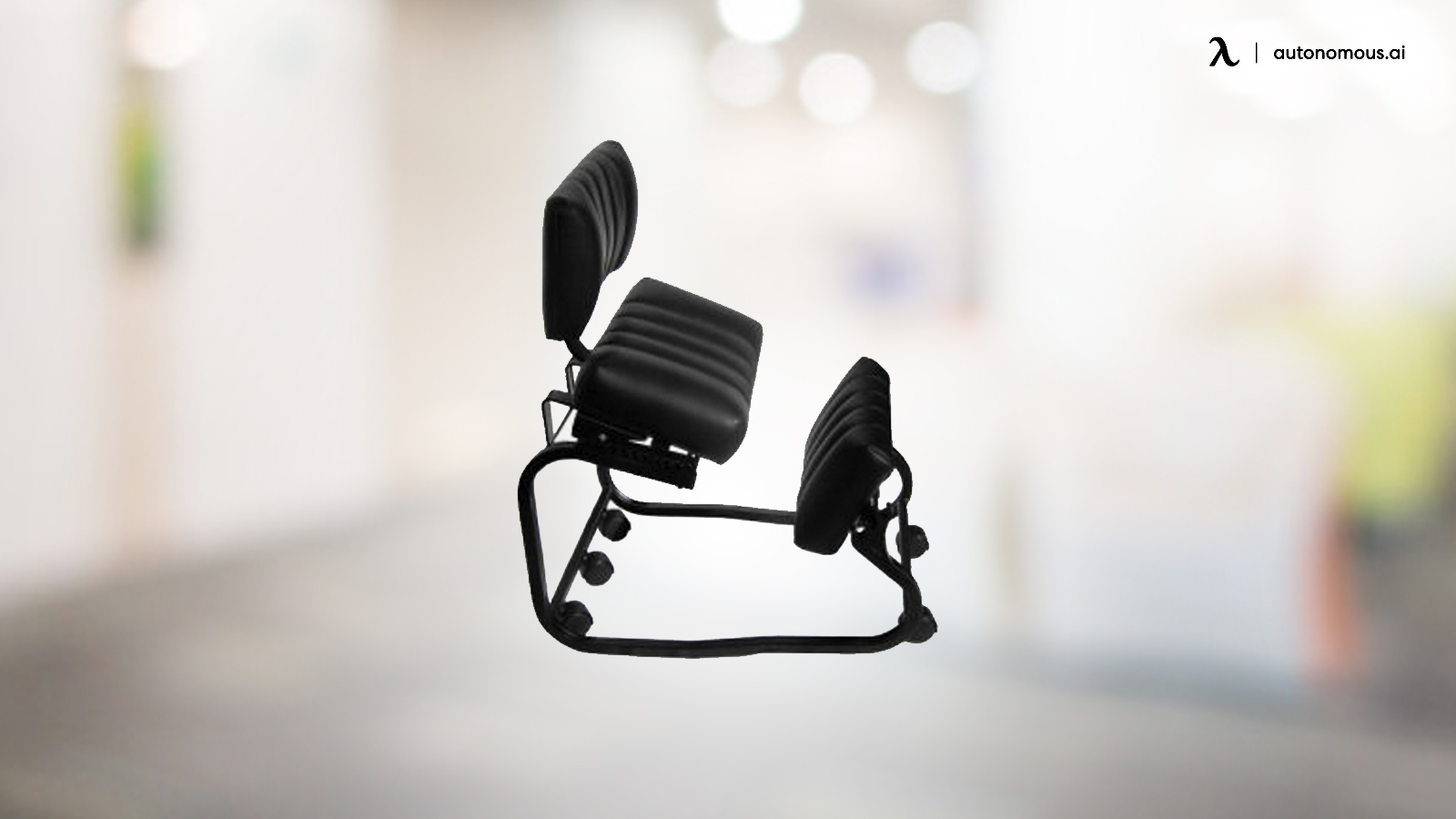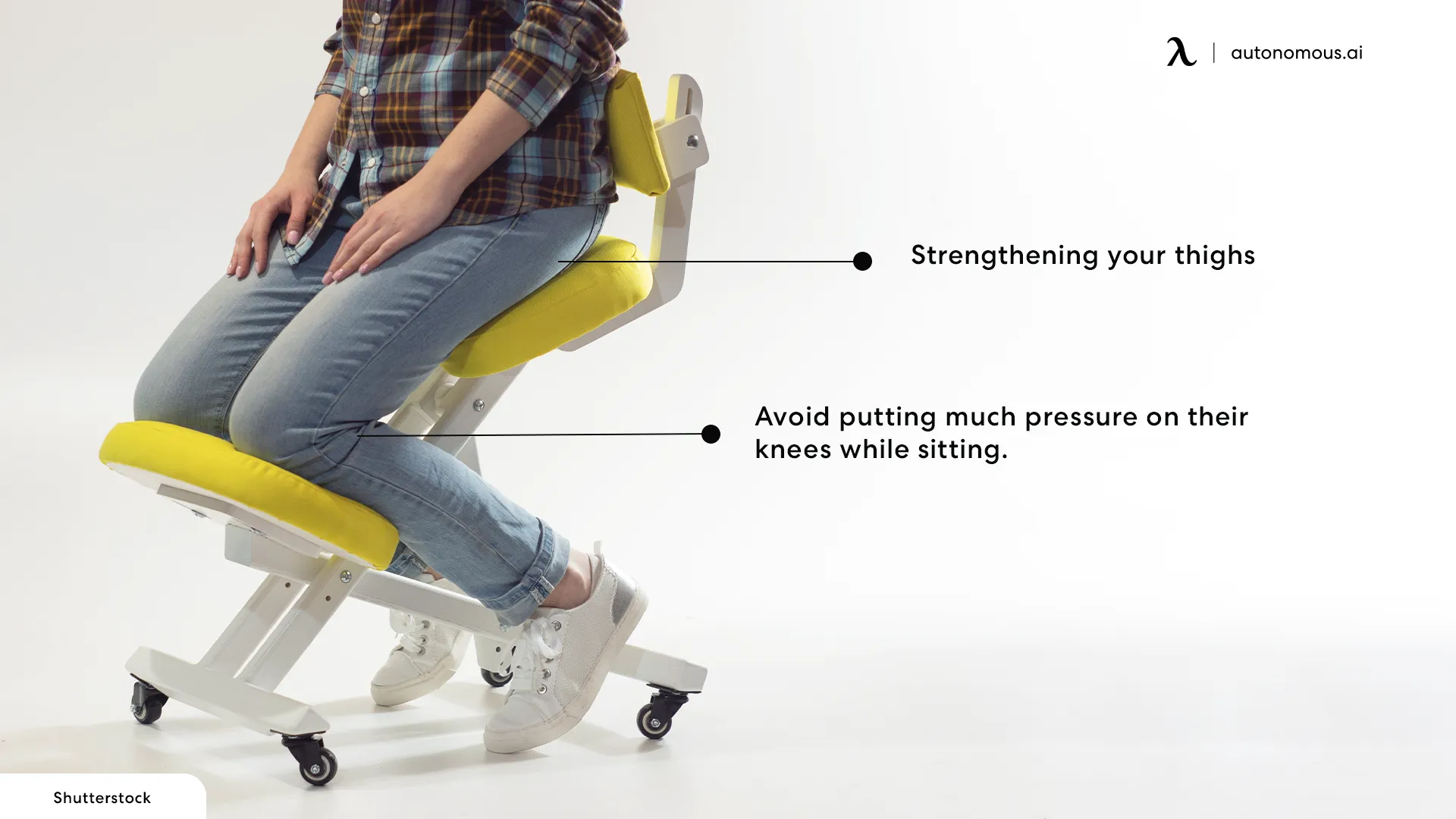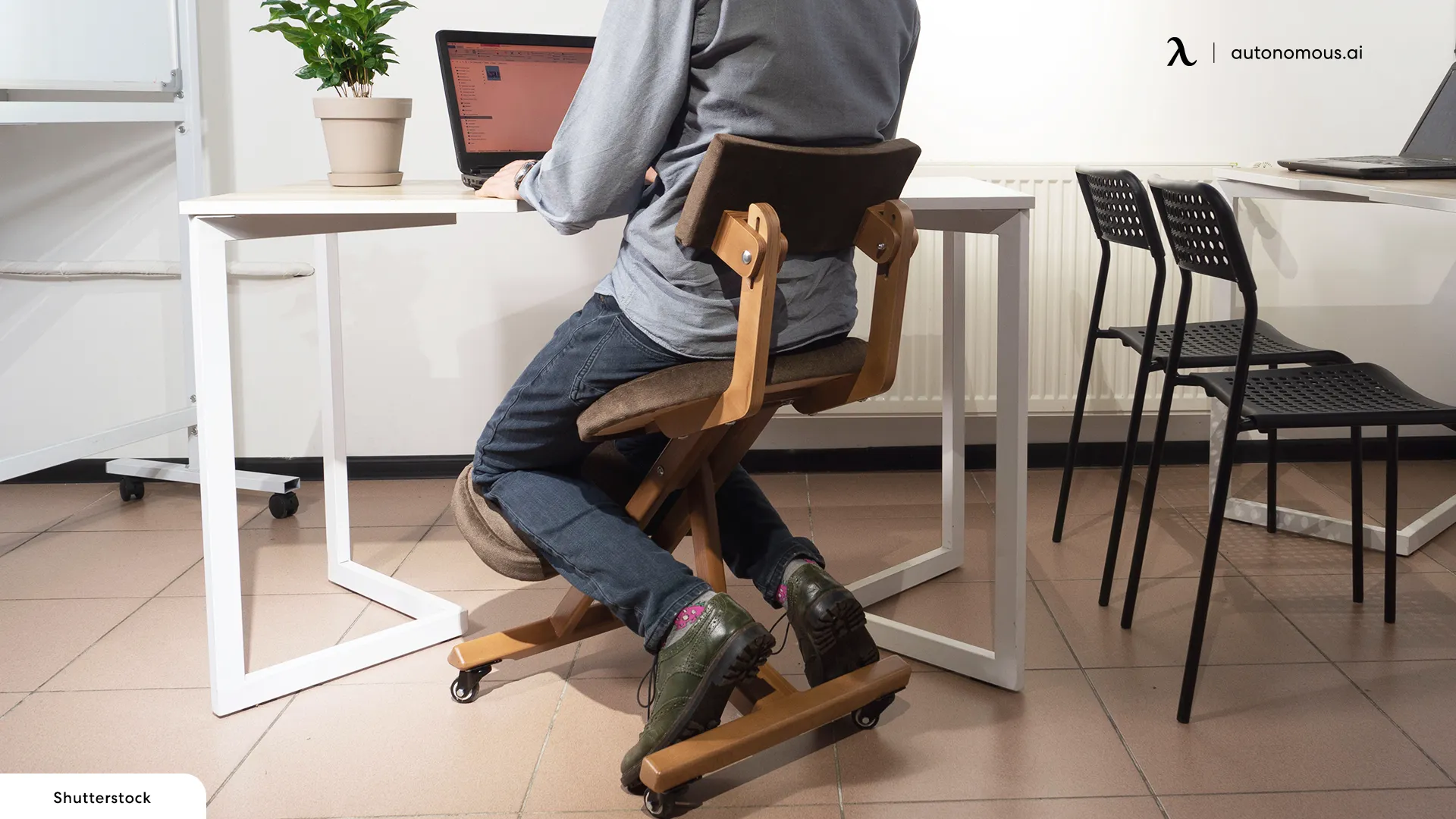
Kneeling Chair Pros and Cons: Is It Worth Buying?
Table of Contents
As time goes on, more and more evidence grows about the challenges of the traditional office chair. While an ergonomically-designed office chair is about the best you can get in terms of comfortable sitting, there is a range of alternative designs hitting the market. Some people have been replacing their chairs with yoga ball chairs. Others prefer ergonomic stools. Some high-mobility offices have been using saddle seats. And, of course, plenty of people stand instead.
Another alternative style of seating is known as the kneeling chair. What is it, is it worth it, and should you consider trying one out?
These are odd chairs for somebody who has never used one, so let's dig in kneeling chair benefits.
1. How a Kneeling Chair Works
If you’ve never seen a kneeling chair before, you might think it’s something like a cushion you kneel on instead of sitting or standing. The reality is a little different.
A kneeling chair is sort of a cross between a standard chair and a saddle seat. It has a seat cushion and a seat back, and it may or may not have arms. Most do not have arms, as they can get in the way of getting in and out of the seat.
The chair is often on rockers, allowing you to lean forward and put your weight on knee/shin rests instead of entirely on your rear. Your knees bend and curl beneath you, but you don’t sit directly on your legs, which allows you more freedom of movement and prevents you from cutting off blood flow to your legs. Meanwhile, the forward tilt of the chair allows the chair’s back to press into and support you, particularly in your lumbar area, while you work.
Instead of the traditional 90-90-90 posture (where your waist, knees, and ankles are all 90-degree bends), a kneeling chair allows you more flexibility. Typically, your waist is around a 135-degree angle, and your knees are closer to a 45-degree angle, with your ankles left to dangle unsupported.
Overall, this position and posture give you the freedom and comfort of sitting in a more relaxed position and let you move and stretch more than a traditional office chair. On the other hand, they can put pressure on parts of your legs that aren’t used to it, and some chairs lack backs and force you to practice active sitting.
Let’s discuss the pros and cons of a kneeling chair in greater detail.

2. Kneeling Chair Benefits
2.1. Pelvic Tilt Encourages Spinal Health
A more open angle at the waist and a slightly forward tilt to the pelvis (without twisting the pelvis to either side) puts the spine in better alignment with the rest of your body. Your spine can straighten, and all weight from your upper body is vertical, letting your muscles and tendons balance themselves out as they naturally would if you were standing. A kneeling posture like this is second only to standing in terms of spinal health.
2.2. Open Waist Encourages Gut Health
When your waist is open at a 135-degree angle (rather than closed at a 90-degree angle) everything in your gut is freer to act. In particular, this helps prevent digestive and bowel issues, as well as circulation issues throughout your internal organs.
You’re also giving your lungs more room to expand, so you can breathe more easily.
2.3. Unsupported Sitting Improves Core Strength
When you’re sitting in a chair that has no back, your back and torso are forced to balance themselves. If you’re used to sitting or leaning in a traditional office chair, this can be painful at first, but you’ll eventually get used to it.
Once you’re used to it, you’ll find that your body is constantly in motion, balancing your torso through micro-adjustments in your back muscles. This constant tension and adjustment strengthens your core and helps alleviate back pain.
2.4. Hip Alignment Prevents Spinal Compression
One of the most dangerous issues with a standard office chair, and one of the most common workplace injuries, is spinal issues caused by compression. Any bad posture while sitting can lead to a spine that’s out of alignment, and that lack of alignment can cause spinal compression. Discs and vertebrae are put under tension, and that tension can cause discs to wear or even herniate, leading to back pain that can even require surgery to correct.
2.5. Better Circulation Promotes Healing
In a standard office chair, several points of contact (such as your glutes, the backs of your knees, and the base of your spine) can all restrict or cut off circulation to different parts of your body.
While you’ll never fully cut off blood flow, restricted blood flow can lead to aches and pains, and it can reduce bodily healing, as your blood has a harder time ferrying nutrients to sore muscles. Thus, a kneeling chair, which removes those pressure points, can promote healing and reduce pain.
2.6. Foldable for Storage
Some kneeling chair designs, though not all of them, can be folded up easily and stored in an out of the way place when you’re not using them. They’re much smaller and more easily shuffled than a typical office chair, and you can fit more of them in a given space, particularly if you need to move them so you can shuffle around other furniture.

3. Cons of Kneeling Chairs
3.1. Elaborated
Now let’s talk about the downsides to using a kneeling chair. There are a few, which makes kneeling chairs a choice, rather than an obligation. They aren’t perfect, otherwise, everyone would be using them by now.
3.2. Restricted Movement
You don’t have your feet clear on the floor to move your chair around, and when you’re positioned on a kneeling chair, you aren’t able to casually adjust yourself as easily as you can with other kinds of chairs.
3.3. Hurt Shins
One of the biggest issues of a kneeling chair is the pressure they put on the front of your legs. Your knees themselves might not have much pressure put on them, but a good portion of your weight is put on your shins, particularly your upper shins. This part of your body is not used to weight or constant pressure, and it can ache over time. This can be exacerbated if you wear jeans or pants with a seam on the shins or a texture that hurts the kin. Additionally, some people might find they develop rashes or even pressure ulcers through extended use of these chairs.
3.4. Restricted Circulation
There are blood vessels that run through the front of your legs, and the cushion of the kneeling pad on your chair can cut off that blood flow. The seat can also cut off blood flow from the backs of your thighs, depending on how the seat pan is designed. This, together, can restrict blood flow as much if not more than sitting in a poorly designed traditional office chair. A well-designed office chair with a tilted seat pan alleviates most of this issue entirely, but you can’t get that in a kneeling chair.
3.5. Difficulty Entering and Leaving
Unlike a traditional chair, where you simply need to sit down, a kneeling chair requires you to climb into it and position yourself properly. This isn’t as simple of a process as you might want it to be, and a poorly-designed kneeling chair makes it even harder with a center post. It’s a lot harder to simply get up and take a break occasionally, and if you’re getting up and sitting down a lot throughout your day, you waste a lot of time with a kneeling chair.
3.6. Worse for Larger People
Kneeling chairs suffer from a fixed design with a fairly minimal range of adjustments. In particular, they are very poor for people who are larger than average. We don’t mean just weight here, either. People who weigh more than average or who are obese will have a harder time finding a comfortable position.
People who are taller than average will also find that a kneeling chair is poorly designed, with less room for their legs in particular. It’s also worth mentioning that people who are shorter than average will also likely have a difficult time, for similar reasons, though these chairs are often more adjustable for shorter people than for taller people.
3.7. Low Weight Capacity
Most commonly-recommended kneeling chairs have a relatively low weight capacity. Most of them top out around 200-250 lbs. If you’re larger than that – and many people are – you can bend or break a frame with the pressure you put on a kneeling chair.
4. Should You Use a Kneeling Chair?
So, given all of the pros and cons of kneeling chairs, should you consider using one instead of a traditional office chair?
Our verdict: probably not as your only option. A kneeling chair does have benefits, but many of those can be achieved in other ways. A saddle chair vs kneeling chair comparison shows that saddle chairs provide most of the same posture improvements without the potential knee and shin discomfort. An ergonomically designed office chair offers greater flexibility and adjustability, though you lose the core-strengthening micro-adjustments that come from not having a backrest.
And of course, alternating between sitting and standing at a height-adjustable desk (with a supportive anti-fatigue mat) is often more effective than sitting in any single chair all day. If you’re still debating, consider whether kneeling is better than sitting for your needs, and don’t forget to check kneeling office chair reviews for real-world experiences.
Finally, if knee strain is a concern, small changes like learning how to fix knee pain from sitting cross legged can make a big difference in long-term comfort.

5. Conclusion
At the end of the day, of course, there are as many different possible lifestyles as there are people to live them. If a kneeling chair fits in with your intended lifestyle, is comfortable for you to use, and doesn’t get disruptive throughout the day, then there’s no reason you shouldn’t use it. The same goes for a saddle chair, a stool, a yoga ball chair, or a standing desk. All of these are options that exist for a reason, and you’re perfectly capable of making the decision to use the one or the combination that is best for you.
.svg)







